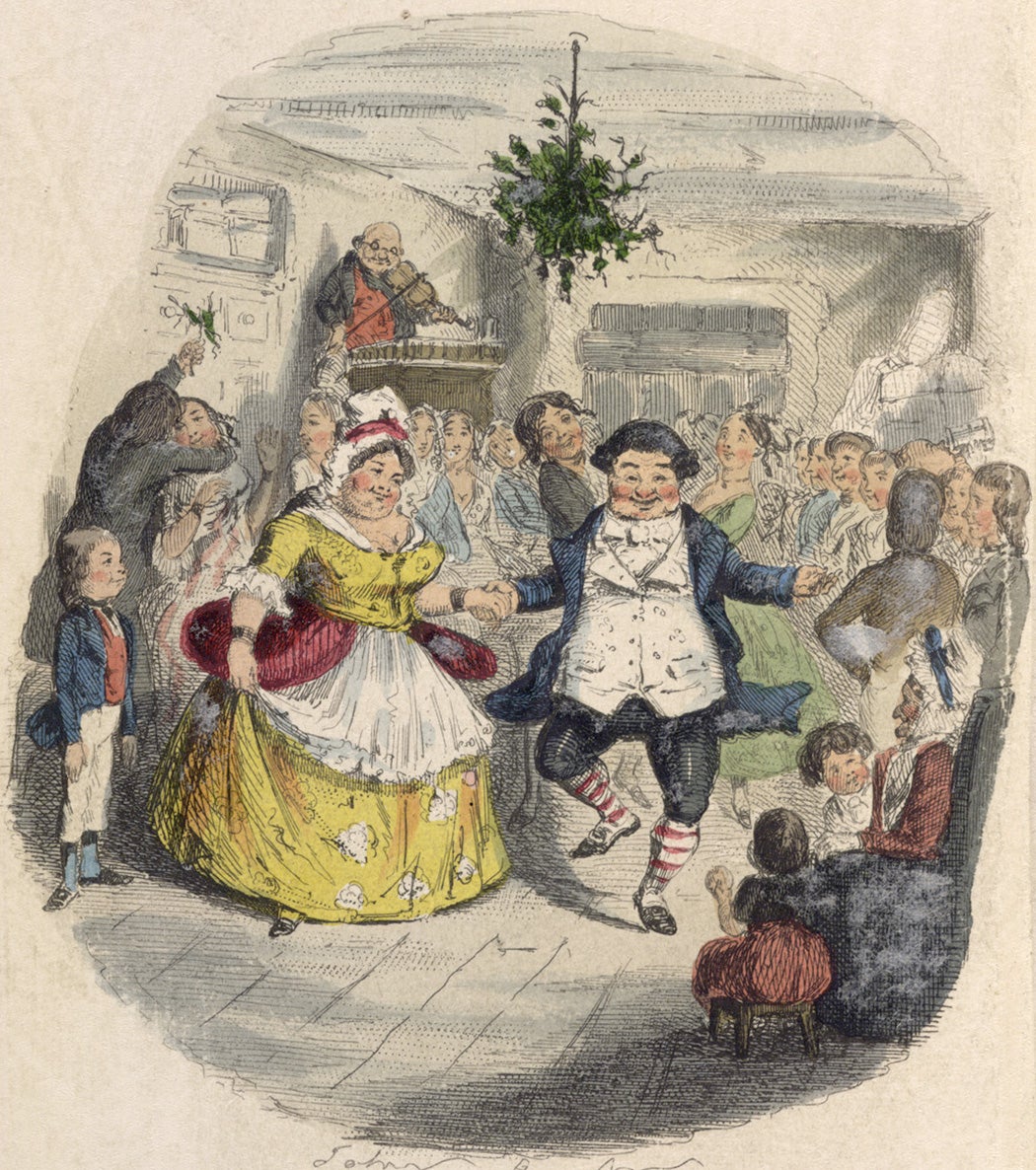For many, it doesn’t feel like the holiday season until a particular piece of seasonal pop culture shows up—finally losing the Little Drummer Boy challenge (LDBC), chuckling at the delightful incongruity of Bowie and Bing (careful, you may lose the LDBC if you follow that link), or calling someone a cotton-headed ninny-muggins. For others, these very signs of a Christmas that’s become a brightly colored, commercialized, multimedia holiday trigger a litany of seasonal complaints.
None of this—not the complaints, not the predictable whimsy, and certainly not the holiday mediascape—are unusual or ahistorical. Though Christmas was for some time, as David Parker notes, “popular, that is to say, as distinct from fashionable,” the combination of industrialization (hello, affordably priced goods!), mass media (hello, advertising!), and relaxed legal restrictions on celebrating the holiday at all (hello, New England Puritans!) meant that Christmas and popular culture started to develop a symbiotic relationship very quickly. (If you lived in Philadelphia, though, Christmas was always a rowdy public affair, because Philly.)
The nineteenth century gave rise to many delightful and enduring cultural institutions, from Clement Moore’s “A Visit From St. Nicholas” to the flashy New York holiday matinee (P. T. Barnum assured patrons he would make their holiday “the most attractive and bewitching of any of their predecessors”), but there’s a solid argument that none has stuck more in our public consciousness, nor been adapted more for popular entertainment, than Charles Dickens’s A Christmas Carol.
Dickens wrote the novella about miserly Ebeneezer Scrooge and his holiday redemption in a matter of weeks, and it was released just in time for the 1843 holiday season. The story was an immediate hit, going into multiple printings and quickly becoming part of the holiday tradition, even for people who hadn’t read it themselves. Scholar Hugh H. Davis observes that “most people know its story as an oral text before they ever might begin to read its written form.”

A Christmas Carol has gone through untold print runs, not to mention numerous pirated editions. It’s inspired adaptations by the dozens in a variety of media, from a 1908 short film to a version with Dickensian zombies. And one of the most faithful adaptations of Dickens’s morality tale is, believe it or not, The Muppet Christmas Carol, currently celebrating the thirtieth anniversary of its release.
Multiple scholars and fans have pointed out that The Muppet Christmas Carol, in handling its source material with care, not only charmingly situates the Muppets in Victorian London but works surprisingly hard to get people to engage with Dickens, to prove that the story persists for a reason. The Muppets assume their assigned characters so well that it requires next to no effort to believe that Michael Caine employs a coterie of frogs and rats with certified accountant credentials or that Mr. Dickens himself was not only blue and fuzzy, he had a thing for chickens.
“[It] is not really a Muppet movie at all: it is a musical adaptation of A Christmas Carol that just happens to feature the Muppets,” notes literature scholar Marc Napolitano.
In some cases, the puppet-human divide is an asset: the various ghosts of Scrooge’s timeline are funnier, scarier, and more poignantly rendered in foam and gauze, without an uncanny CGI valley or a too-recognizable actor’s face to shatter the illusion. Scrooge himself, with his “entire existence devoted to ledgers, cash boxes, and bills of sale,” is literally exaggerated in size and sway over his tiny employees, demonstrating the fearsome impact of his greed.
But there’s another reason for the movie’s success: in layering the public’s universal love of the Muppets on top of our universal familiarity with Dickens’s fable, the movie is one of the best demonstrations of the idea that Christmas isn’t just a date on the calendar, it’s an amalgamation of experiences. In a mass media world, in modes that Dickens could never have contemplated, entertainment has become part of the holiday itself. Dickens was at the beginning of a form by which entertainment goes from being about a holiday to being an actual part of its successful exercise.
In Dickens’s time, people experienced Christmas by reading his story. By the end of the century, department stores had made-over Santa Claus into a portly, friendly figure and invited him in for a seasonal residency to complement all those sales promotions.
“Christmas was pieced together,” writes Karal Ann Marling, “over a hundred-year period from…snippets of authority, artistry, and practicality. [And] the influence of the television medium has been massive, invasive, and almost universal.”
Weekly Newsletter
Support JSTOR Daily! Join our new membership program on Patreon today.







